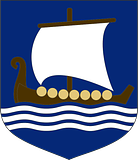
Mission Statement | Thor class BBN | Gunnr class CVN | Mjolnir class BCN | Fenris class CAN | Ukuelige class CGN | Berserker class DDGN
Our Mission Statement
Grunnvágr Metal Works is, at present, the sole provider of surface ships to the Rigsforbund Søværnet. We have gained this status because of our consistent pursuit of technological development, excellent quality control, and delivering on our contract obligations in regards to time and budget. So, what does this mean to you, our potential client nation? It means you will have ships with cutting edge technology in your fleet, for an affordable price, and without delays in the construction process due to "difficulties".
Also, unlike some of our competitors, we do not rename venerable designs, ships that cannot stand up to the present high intensity naval environment, and then sell them to unwary nations for massive profit. With Grunnvágr Metal Works, you receive unique ships designed with modern high intensity naval combat in mind and at a reasonable price.
Our Patrons
None as yet
Our Payment Policy
As a matter of course we extend financing to contracting parties until the end of the build period for their order. For orders of multiple classes, the financing provision extends to the end of the longest construction period for all ships ordered. However, we have made the decision to extend discounts under certain tightly defined circumstances. These are:
- Nations that have negotiated a Favored Nation status with the Imperial Union receive a 1% discount
Nations that have been given Most Favored Nation status by the Imperial Union receive a 2.5% discount
Nations with a population of under 1 billion citizens receive a 2.5% discount
Repeat customers receive a 2.5% discount
Members of anti-slavery and anti-piracy organizations receive a 5% discount
Discounts do "stack", with the smallest applying first.
Our Policy On Reselling Ships
As a general rule, we do not sell ships to another nation without the consent of the Union Government. Therefor, it stands to reason that we ask that our patrons do not sell vessels second hand, or act as middle parties to the acquisition of new vessels, without the express permission of Grunnvágr Metal Works and the Union Government. Violation of this policy will result in the patron being permanently blacklisted and could very well result in military action by the Union Government.
Blacklisted Nations
None at present.
Special Mentions and Thanks




